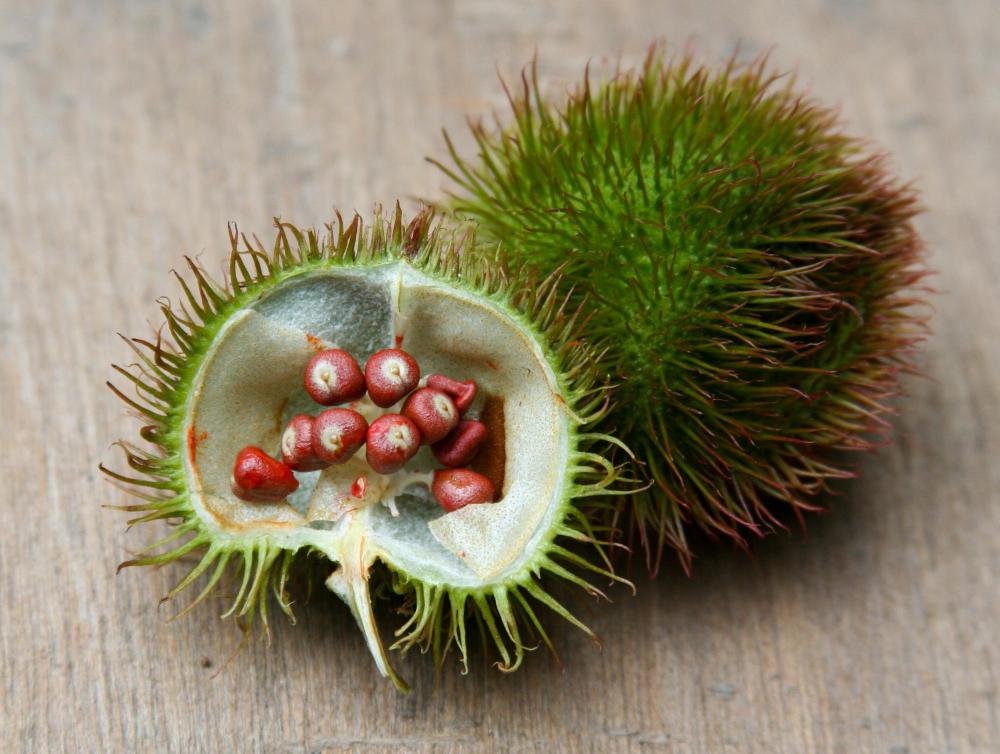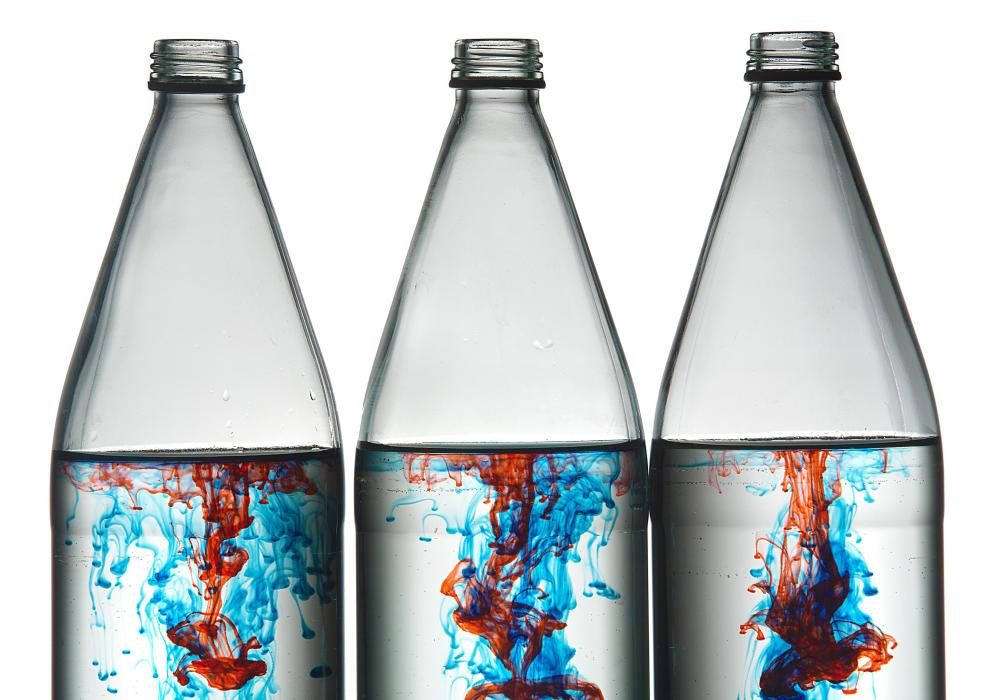At DelightedCooking, we're committed to delivering accurate, trustworthy information. Our expert-authored content is rigorously fact-checked and sourced from credible authorities. Discover how we uphold the highest standards in providing you with reliable knowledge.
What is Annatto?
Annatto, also called roucou, is a natural plant extract used to dye an assortment of foods, textiles, and body care products. Primarily, it is used as red food coloring in a wide assortment of foods. The food additive number for it is E160b, allowing consumers to identify it on a label even when it is not listed by name. Two compounds give annatto its unique red color: bixin, and norbixin. The compounds are very similar chemically to beta-carotene, the substance that makes carrots orange.
The achiote tree, botanically known as Bixa orellana, provides the source for annatto. It prefers loamy soil in tropical conditions at low elevations, and can range in height from almost shrub-like to a full grown tree. Achiote has heart-shaped, green leaves and rose-pink to white, five-petaled flowers. When the tree fruits, the pulp around the fruit can be processed to make the extract, and the seeds are preserved for use in cooking. The trees have been used in food for centuries by Latin Americans, and their products were introduced to Europe by early explorers in the 1500s.

An alternate name for achiote seeds is the “poor man's saffron,” because they are often used to color foods. The seeds are steeped in hot water to extract the characteristic red color, or they are fried to color the oil. The flavor of the seeds is slightly sweet and also peppery, with a touch of nutmeg. They are known by a plethora of native names, including atsuwete in the Philippines, where the plant was imported by the Spanish, and urucum.

The red dye extracted from the pulp is used in an assortment of industries. Another alternate name for the achiote tree is the “lipstick tree,” a nod to the use of annatto in cosmetics. It's also used to dye textiles, although its largest use is as a food coloring. Annatto appears in preserved meats, cheeses, sweets, and numerous other foods. It is safe for vegetarians, since it contains no animal products and is not processed with animal materials, and it is also approved for religious diets.

Food dyes can sometimes cause allergic reactions, although it can be difficult to pin down the source of the reaction, since so many dyes are added to processed foods. Children seem to be especially susceptible to additives. If allergic reactions cannot be linked with common allergens like wheat, dairy, or nuts, testing for sensitivity to food dyes may be a good idea.
AS FEATURED ON:
AS FEATURED ON:













Discussion Comments
@anon47201: Good question. I am allergic to both--verified by skin tests at my allergist's office. I'm not allergic to anything else (food-wise) that I am aware of. My symptoms were excruciating abdominal pain--doubled over and to the point of tears sometimes. Almonds are pretty easy to avoid. Annatto is much harder. It's listed as "natural flavoring" so just check the ingredients and if you see that (or annatto of course) then best to steer clear. You'll be rewarded if you do, because in retrospect, I think the random ingestion of both of these things meant my body was in a near constant state of inflammation.
Also, in thinking back, I believe I've been allergic to both almonds and annatto for my whole life. It took me 50 years to put 2 + 2 together. Good luck!
In which country is Annatto available?
I spent over a decade suffering from severe daytime sleepiness, physical weakness, and fatigue...which seemed to come and go (sometimes, sometimes not) after eating meals. I attributed this to middle age, borderline Type II diabetes, and excess weight. But after eliminating some other additives from my diet (suddenly I had a bad experience with peach yogurt colored with annatto) wow! It made me week in the knees, feeling extremely heavy-with fatigue, and I couldn't think straight. I eliminated this coloring from my life, as well as red and caramel colorings, which gave me the same reaction. I got my life back. I literally missed out on a decade of my life in some sort of varying stupor while consuming these products. Beware!
@anon307282: As I recall, Dr. Campbell-McBride says to test foods by putting a bit on the sensitive inner arm by the wrist before bed. Let it dry, sleep, and check for red reaction in the morning. I think this is described on her site, gapsdiet.
Does anybody know how if there is a formal test to diagnose this other than diet elimination?
I am also allergic to this, to the point of it closing my throat and congesting my chest severely. I avoid it now and have since 2009.
I found I am allergic to this. It is in a huge number of products now. More and more every day and companies can still claim natural or organic etc. It is also much cheaper than beta-carotene. You find it in more high end products down to the cheap stuff. Anything with an orange, brownish color: cheeses, breading, crackers, etc. Usually it says Annatto (color) but sometimes it can just say "natural color".
My son, who is 16 months old, got a really bad rash from a baby yogurt--the only ingredient unknown to us was annatto. We tested the theory by giving him a piece of cheddar, which had annatto to give it its orange color: same thing. I will be avoiding it, from now on, as diligently as I have to avoid giving him anything with Red 40.
Does annatto contain wheat or gluten?
does this product have any connection to almonds?
From what I could tell this is the only natural food dye with almost as many problems as their synthetic counterparts.
Post your comments